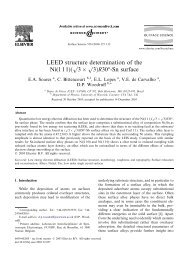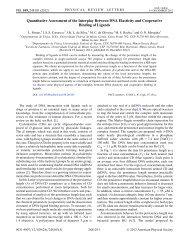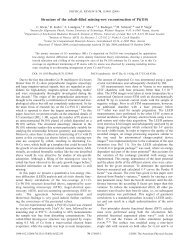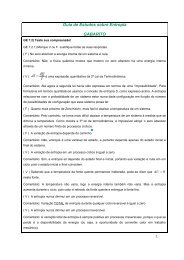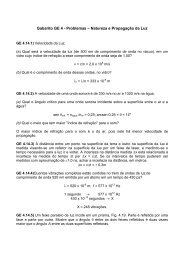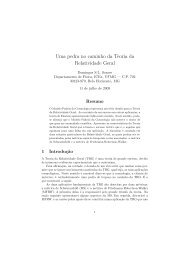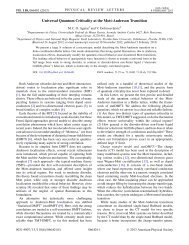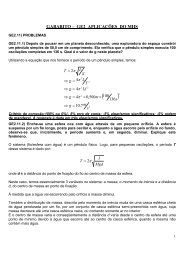Fundamental Statistical Mechanics
Fundamental Statistical Mechanics
Fundamental Statistical Mechanics
Create successful ePaper yourself
Turn your PDF publications into a flip-book with our unique Google optimized e-Paper software.
6. Boltzmann's Ergodic Hypothesis<br />
6.1 Approach to Equilibrium<br />
We now begin to try to solve what might well be called the <strong>Fundamental</strong> Problem of <strong>Statistical</strong><br />
<strong>Mechanics</strong>: Mechanical systems - isolated ones, at least - are time reversible and recurrent.<br />
However, we observe that large isolated systems often reach a state of thermodynamic<br />
equilibrium. How do we explain our observations in such a way that there are no contradictions<br />
with the laws of mechanics? Boltzmann proposed a resolution along the following lines:<br />
a) Equilibrium statistical mechanics can be formulated in terms of microcanonical ensemble<br />
averages, by using the invariant measure dµ = dS gradH . The ensemble average of a phase<br />
variable B(Γ), is<br />
B(Γ) mc =<br />
The density of states is<br />
∫<br />
Ω(E) = ∫ dµ<br />
H =E<br />
dµB(Γ)<br />
H = E<br />
dµ<br />
H = E<br />
∫ (6.1)<br />
and the thermodynamic entropy is given by S = k B lnΩ(E).<br />
that<br />
<strong>Statistical</strong> <strong>Mechanics</strong> Page 35<br />
(6.2)<br />
As an aside, the microcanonical ensemble phase space density is ρ(Γ) = δ(H − E), so<br />
B(Γ) mc =<br />
∫<br />
dΓB(Γ)δ (H − E)<br />
∫ dΓδ(H − E)<br />
(6.3)<br />
If in the laboratory, we were to make very precise measurements of the quantity B(Γ t ), where Γt is the location of the phase point of the system at time t (where for example B(Γ t ) is the force<br />
per unit area on a piston) the values would show wild fluctuations about a more slowly varying<br />
"mean" quantity (as molecules collide with the piston). We might identify the thermodynamic<br />
value with the time average<br />
1<br />
B = B(Γ) t = lim<br />
T →∞ T B(Γ t )dt ∫<br />
T<br />
0<br />
(6.4)



